Landscape and/as Archive
Introduction to the workshop “Un-/Learning Archives in the Age of the Sixth Extinction”
[1]It is complex to think of landscapes as and with the concept of archives, as we set out to do when conceiving of the workshop “Un-/Learning Archives in the Age of the Sixth Extinction” for the Whole Life Academy Berlin. We were combining our interests as an art historian working on archival practices of contemporary artists and filmmakers and an artist who deals with landscape and makes use of archival concepts and forms in proposing a workshop on archives as related to overlapping sites of nature/culture, climate change, deep time, and the built environment.
We were inspired by participation in the 2019 Whole Life Academy in Dresden at which theorist Sven Spieker presented his notion of the “after-archive,” the contemporary expanded archive, “less like a well-defined thing we confront from outside than an environment within which we move and operate, both archivists and archival producers all at once.” He pointed to models of considering the natural environment as archive and argued that “[f]rom the point of view of the Anthropocene…an opposition [between archives and biological life] seems…doubtful. As a geological epoch, the Anthropocene implies that the changes wrought by human beings in the natural environment…are no longer external to that environment, but have become part of it.”[2]
Even more so, we were drawn to the Whole Life Academy Berlin’s emphasis on nontraditional archives in Berlin and hands-on learning in the field (disrupted, unfortunately, by COVID-19), as well as drawing on local experts. Accordingly, we planned the workshop around the sites of Teufelsberg in the Grunewald forest, the Museum of Natural History Berlin, the Seed Bank of the Botanic Garden Berlin-Dahlem, and the Botanic Garden and Botanic Museum Berlin, and scholars, researchers, and curators, Sandra Jasper, Anna-Sophie Springer, and Florian Wüst.
Lorraine Daston argued in Science in the Archive: Pasts, Presents, Futures that archives have been so powerfully associated with the historical sciences that other archival forms have received too little attention.[3] Focusing on one of these less studied areas, archives and their potential relationship to the natural environment, we considered a number of issues in conceiving of the workshop, including, first, how climate change and accelerating species loss have unleashed impulses to preserve through collection and recording, for example, through seed banks and forms of documentation, parallel to earlier histories of preservation in response to ecological and cultural destruction related to colonialism and modernization. Other questions included how climate change has transformed notions of time, history, and storage; how temporal traces have been conceived of as recorded in landscapes and objects in various fields, historically and in the present; how scientists use sources such as ice cores and tree rings as “archives”; issues related to the long-term storage of nuclear waste; how deep time has been a lens to reconceive of various fields; and how ruins have gained new meanings as extinction has become a pervasive cultural trope (as Joanna Zylinska has written). We were also interested in “invisible” and spatial archives, such as histories of colonialism and war manifested in built environments and urban ecosystems. We considered how we might extract meaning from places of storage and nonhuman ecosystems, overlaying historical archaeologies and geological markers in the context of regionally significant institutions.
As one of our key reference texts Arctic Archives: Ice, Memory and Entropy attests, there is a history of considering landscapes as archives, but it can also be potentially misleading to turn the archive—a “traveling concept” that moves across disciplines, in Mieke Bal’s phrase—into a metaphor.[4] Historian Georg Toepfer writes helpfully in his essay in the book about the history of the concept of “natural archives.” In the eighteenth century, philosophers and scientists considered the field of natural history temporally for the first time, speculating about changes to “primordial” plant and animal forms over the course of time. In addition, they deployed the term “archive” to describe evidence of physical changes and prior epochs in nature, partly referencing earlier eighteenth-century notions of fossils. For several decades, it became common to apply the metaphor of documents to such phenomena, before the idea of history was narrowed to the human realm. Toepfer also discusses the more recent application of the notion of archive to soil in relation to legal arguments about resource conservation and writes that it is in relation to the Arctic and the medium of ice that ideas about natural archives have strongly resurfaced in recent years, as scientists study data stored in sediments and cores.[5]
Wolfgang Ernst in his essay in Arctic Archives regards the desire to consider the Arctic and other places and natural objects as archives as a “symptom of current media culture itself.” He cautions that true archives cannot exist without intentional selection, that archives exist in cultural, symbolic time and orders and are not equivalent to “physical ‘recording.’” However, concepts of the archive, time, and memory are in flux today as a result of shifts in contemporary media, as long-term “cold” storage and short-term “hot” memory increasingly blend into one, at the same time that the earth warms due to human-induced climate change.[6] Returning to Toepfer’s essay, the latter discusses ways in which we might usefully consider natural sites and phenomena as archives, given Ernst’s critiques of overly expansive uses of this term. Toepfer writes that preserved natural traces from which the past can be recreated can be usefully considered archives not in and of themselves but when they are “co-produced by humans,” that is, when meaning and information are extracted from them via theories and technologies. Thus, they are archives to the extent that they are interpreted and made use of discursively.[7]
In the same text, Reinhard Hennig writes about the conflicted cultural valences of the Svalbard Global Seed Vault, which has become, in many ways, the exemplary contemporary “natural archive.” For this reason, the topic of seed banks arose in multiple ways throughout the workshop. Hennig shows how the Vault has become the “outstanding symbolic and material representation of the Anthropocene and all of the implications and inherent contradictions that this concept of a new geological era…comprises.”[8] Along these lines, the Vault’s Arctic and Norwegian location is usually characterized in an idealized and ahistorical way, its preservation of cultivated food crop seeds is sometimes simplistically presented as solution to biodiversity loss and other complicated phenomena, and simultaneously, the Vault has become caught up in catastrophic environmental discourse and “species thinking” about climate change’s causes.[9]
We also drew upon Ross Exo Adams’s essay “Landscapes of Post-History,” in which he writes about the contemporary treatment of landscapes as archives: “If landscape is an archive, then our interventions into it can become the making visible of the richness of its historical evidence; like a well-cut ice core, it must draw us into the past, narrating the unfolding of the human and non-human relations layered into the ways in which landscape now speaks in the present. And if landscape is to be seen as a spatial and material record of the past, it is inevitable that this record will speak of past errors and inherited social systems, recounting—often indirectly—the exploits of capitalism, modernity, imperialism and episodes of human and ecological violence.” However, Adams advises that this approach has the danger of becoming apolitical when focusing on atrocities deep in the past or phenomena difficult to comprehend, drawing one into a sense of “sublime awe of total, inevitable catastrophe.” At the same time, he offers examples of approaches that move beyond such attitudes, for example, works engaging in “political ecology.”[10]
Our first workshop guest geographer Sandra Jasper discussed “wastelands as urban archives.” Jasper’s work has dealt with the history of Berlin’s wastelands, tracing responses to such spaces by inhabitants, artists, and city agencies, as well as their cooptation by developers. Jasper also shared her archival research methods (also methods of feminist geography), which include exploring multisensory features of urban spaces, carrying out archival research in an embodied way, drawing on one’s own experience of places, investigating gaps in the archive, and going beyond the official archive by exploring nontraditional ones—for example, by treating the city and soil themselves as archives and examining histories of different groups’ engagement with sites, including through community and activist archives.[11]
In conjunction, we viewed the documentary film Jasper co-produced, Matthew Gandy’s Natura Urbana (2017).[12] Here, Gandy provides a history of Berlin’s “discovery” as natural site, beginning in the 1950s, with the work of botanists Hildemar Scholz and Herbert Sukopp, who explored the novel ecologies of the Brachen, or urban wastelands, and rubble landscapes of post-World War II Berlin. This new approach to the “botanical city” allowed, among other things, for revision of idealized notions of native and non-native plants and for the Red List to become a legal tool for urban conservationists.[13] The film also demonstrated the utopian dimensions of spontaneous plant life and undeveloped urban spaces—increasingly endangered in Berlin today—which, at the same time that they contain past traces, have allowed the city’s inhabitants to imagine alternative social forms and futures. Jasper also addressed the layers of history and memory at Teufelsberg, the Berlin landform composed of World War II rubble and our workshop site paired with her talk, which, in many ways, exemplifies her idea of the city as archive.
Researcher, curator, and publisher Anna-Sophie Springer was our second workshop guest, corresponding with the site of the Museum of Natural History Berlin. Springer discussed her multi-year collaborative project with Etienne Turpin Reassembling the Natural, which approaches archives from the perspective of the history of natural history collections and museums and foregrounds issues of colonial archives. Reassembling the Natural took as its starting point the mid-nineteenth-century specimen collections from the Malay Archipelago and Amazon of scientist Alfred Russell Wallace. Springer and Turpin ask how such collections can be re-mobilized to address contemporary crises of biodiversity loss and climate change: “Can—and if so, how can—a colonial archive become a point of departure for a conversation about other ways of knowing, reading, and sensing the heterogeneity of nature as it is voiced by international artists, scientists, and activists?”[14] Springer emphasized that decolonial questions and methods that are being debated in ethnological contexts must be considered in the area of natural history—which has shaped our images and notions of nature—and in examining historical scientific collections and archives.[15]
From the Natural History Museum Berlin, researchers Elisabeth Heyne and Mira Witte presented their research program Towards a Collection of the Anthropocene.[16] This project also links natural history museums with questions of the present, in this case, in a participatory way. Forgoing the museum’s rich collections, in a critique of the history of natural history collecting, they work instead with crowdsourced objects, asking the public to share personally meaningful things and interpret them in the context of the Anthropocene, bringing out neglected aspects and manifold meanings, including global and extractive ones. Doing so requires an integration of natural and cultural objects and knowledge, along with memories and emotions.
Our final workshop guest was film curator Florian Wüst who discussed the multi-year collaborative project Licht Luft Scheiße: Perspectives on Ecology and Modernity. The undertaking was one of many commissioned for the Bauhaus’s 2019 hundredth anniversary but chose to examine “contextual questions and blank spaces” of the institution.[17] The research collective considered sustainability’s “long history” using an archaeological method, aiming to produce not a history of modern artistic engagements with ecology, but rather “follow an inductive methodology, which through a multitude of artifacts and source texts, supplemented by a selection of contemporary artistic works, opens up a history of sustainability that is as focused as it is fragmentary.”[18] In this way, the publication’s first volume Archaeologies of Sustainability compiled non-chronological “fragments” of new twentieth-century notions of ecology of various thinkers and experimentation by social reform movements in waste recycling, farming, self-organized communities, “living” architecture, urban conservation and activism, nature photography and film, and more—producing an alternative “biocentric” history of modernism. Many of these programs were situated around Berlin—exhibiting for the workshop the richness of Berlin as historical and living archive of ecological experimentation.
Along with Wüst’s visit, we viewed the films Wild Relatives (2018) by Jumana Manna and Asbestos (2016) by Graeme Arnfield and Sasha Litvintseva, both of which opened up multiple facets and histories of archiving. Manna’s film centers on the ICARDA (International Center for Agricultural Research in the Dry Areas) seed archive, which recently moved to Lebanon after the outbreak of the Syrian War, the war’s destruction requiring the organization to reconstruct its collections by withdrawing its seeds from the Svalbard Global Seed Vault. The film puts into play intertwining threads of ICARDA’s roots in the Green Revolution, the plight of Syrian refugee farmers subject to displacement and agricultural policies oriented toward agribusiness and global markets, the farmers’ efforts to create their own community-based archives of heirloom seeds and other instances of the persistence of inherited knowledge of farming, and the use of young female refugee farm labor to reconstitute ICARDA’s lost archives. Linked colonial, destructive, and utopian dimensions of seed collection are brought to light by the film, conflicting meanings of archiving in relation to landscape and nature that we wanted the workshop to bring forward.
Asbestos, on the other hand, visits former sites of asbestos extraction in the eponymous Canadian city (renamed Val-de-Sources in 2020, in an attempt to shed its lethal legacy). It also features archival industrial films about the carcinogen and contemporary footage of its removal from building sites, as well as demonstrating how the city formed its identity around the toxic resource. The film was made in line with Litvintseva’s larger project of “geological filmmaking,” which links back to multiple notions that we are interested in relation to the concept of “natural archives.” Litvintseva calls for a reciprocal consideration of geology and film in the context of media studies methods grounded in materiality: “we can triangulate geology as being constituted simultaneously by land formations…, the mineralogical materials that they are formed of, and the ongoing processes that have…and are forming them. A film can itself be triangulated as constituted by all the images and sounds that it consists of, its material form of storage…, and the temporal experience it engenders when watched.”[19]
Finally, local sites associated with Wüst’s presentation were the Botanical Garden and Museum Berlin and Seed Bank Berlin-Dahlem. Especially by means of Katja Kaiser’s research for Licht Luft Scheisse and elsewhere, we considered histories of the garden, which was a node of international colonial botany, showcase for German colonial acquisitions, and site where the German public encountered tropical nature in the late nineteenth and early twentieth centuries. Traces of these histories are still present in aspects of the garden and museum’s collections today.[20]
In our meetings, in addition to responding to the workshop’s various components, we shared our own works. The idea was to integrate workshop themes into our own multifarious practices in different fields. In our work, Steve Rowell and I have been connecting workshop themes and concepts with local landscapes and collections, researching prairie remnants and conflicted sites of “extinction” in the Midwest. Below, Steve Rowell responds to selected workshop sites that were especially generative, and in addition, Jaime Allen, Tamara Becerra Valdez, Jeremy Bolen, Simon Browne, and Mél Hogan with collaborator Susan Callahan write about their research and modes of working in relation to workshop themes.
Site Extrapolations: Landscape and/as Archive
Teufelsberg (Devil’s Mountain) on the Teltow Plateau in the Grunewald Forest
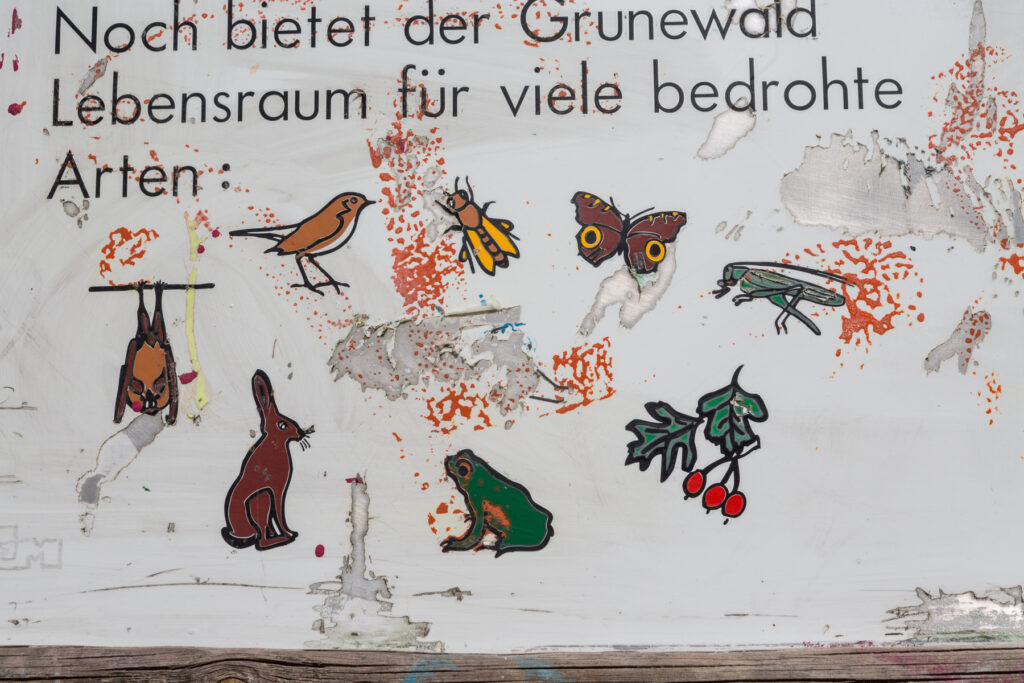
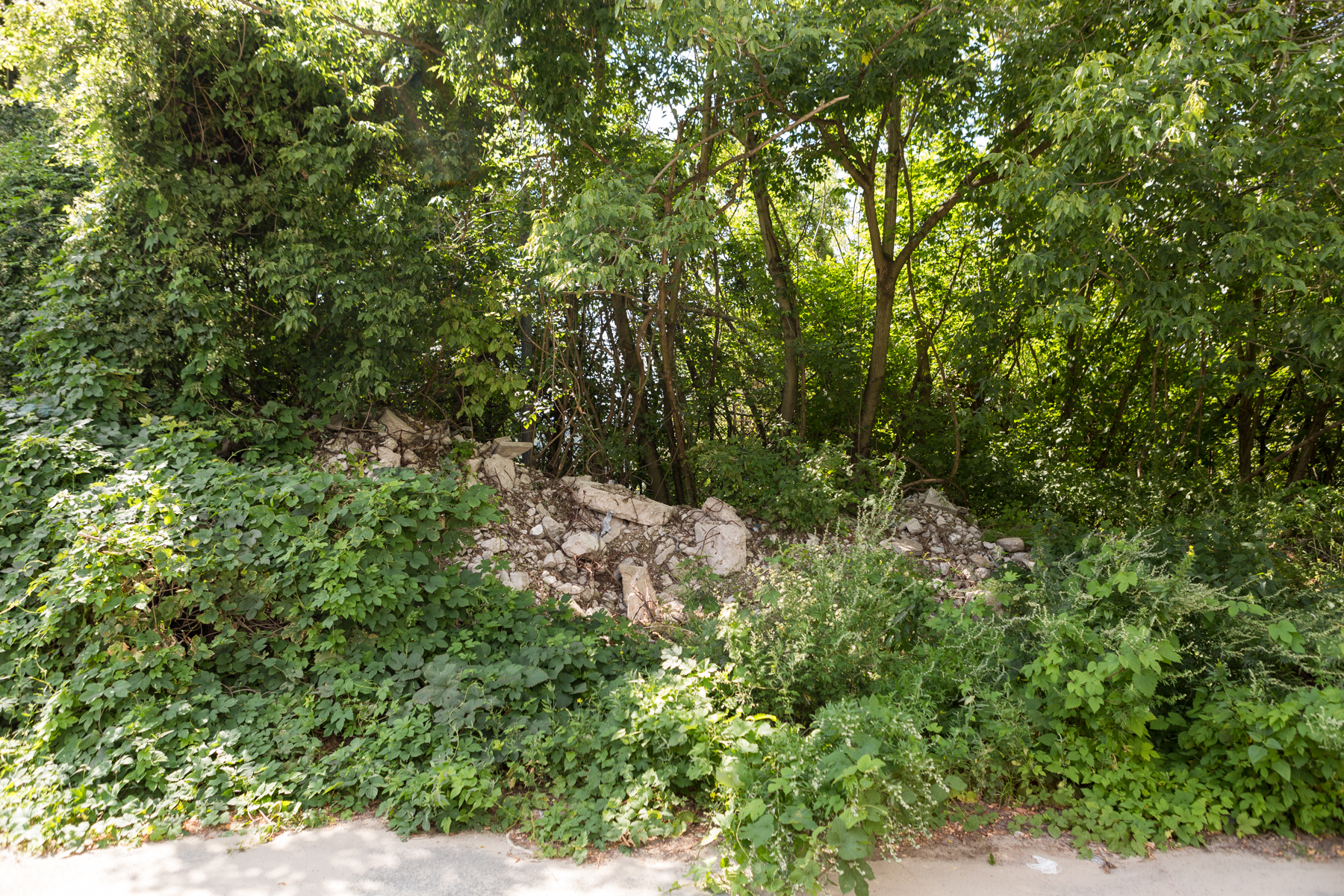
Seen as a natural archive, the plants and animals living on top of the built environment of the Teufelsberg ruin are a collection of native and adventive species in a constant state of flux. This flux is determined by the rate of change of the ruin and its role as a tourist attraction. As more people flock to the site not only to experience views of the city and forest below, but also to explore the unique infrastructure of this Cold War-era US military listening station, the resulting disruptions and contributions to animal and plant life can be studied and analyzed. New species adapt to the human intrusions, while others are displaced.
Remnants of foundations along the path to the entrance gate of Teufelsberg: Evidence of the twentieth-century bombing of Berlin and the legacy of the Cold War can still be seen beneath layers of soil and Brachen (urban wastelands, in which opportunistic and adventive plants appear), which are thriving in this unique post-ruin ecology. The remnants of the built environment visible here might be from the National Security Agency’s (NSA) site demolition in the early 1990s, or from twenty-six million cubic meters of rubble from the bombing of Berlin during World War II, piled up to form this 120-meter-high hill, or even from the original Nazi Wehrtechnische Fakultät (Military Technical College) that lies forever entombed, crushed beneath eighty years of negative consequences.
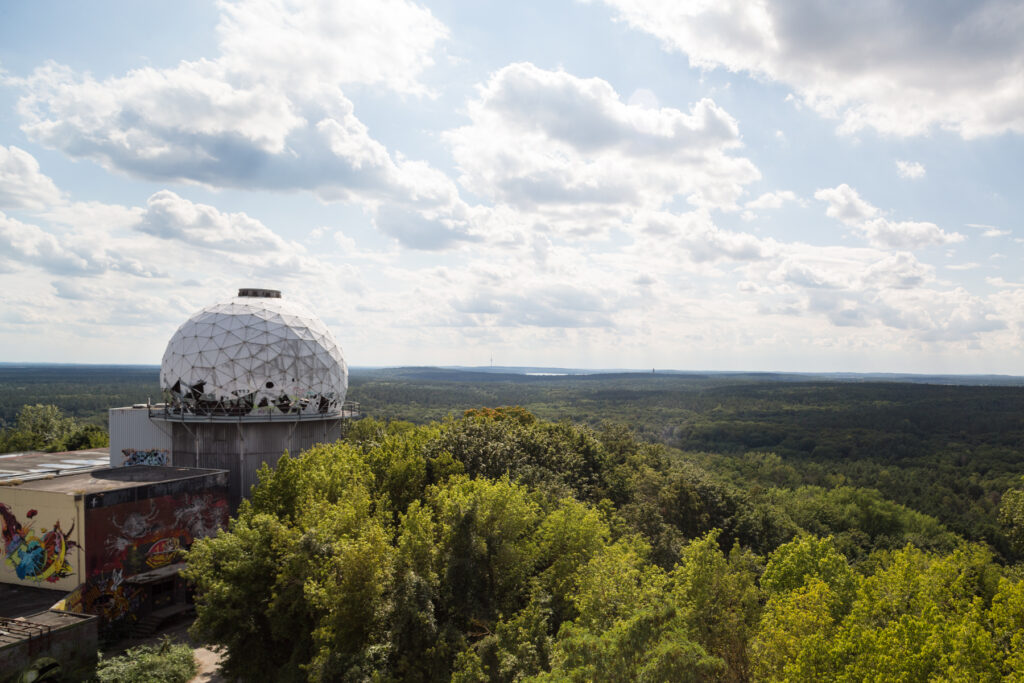
A view from a hill: In the distance, beyond the Grunewald forest, the landmark shape of Berlin’s 1960s era Alexanderplatz TV Tower (Fernsehturm) is barely visible on the horizon. The disintegrating geodesic radome in the foreground once housed equipment designed to peer over the horizon, into East Germany and through the Iron Curtain, in order to intercept encrypted electromagnetic emissions from the USSR. “Fernsehen” translates as “to see something that is far away.”
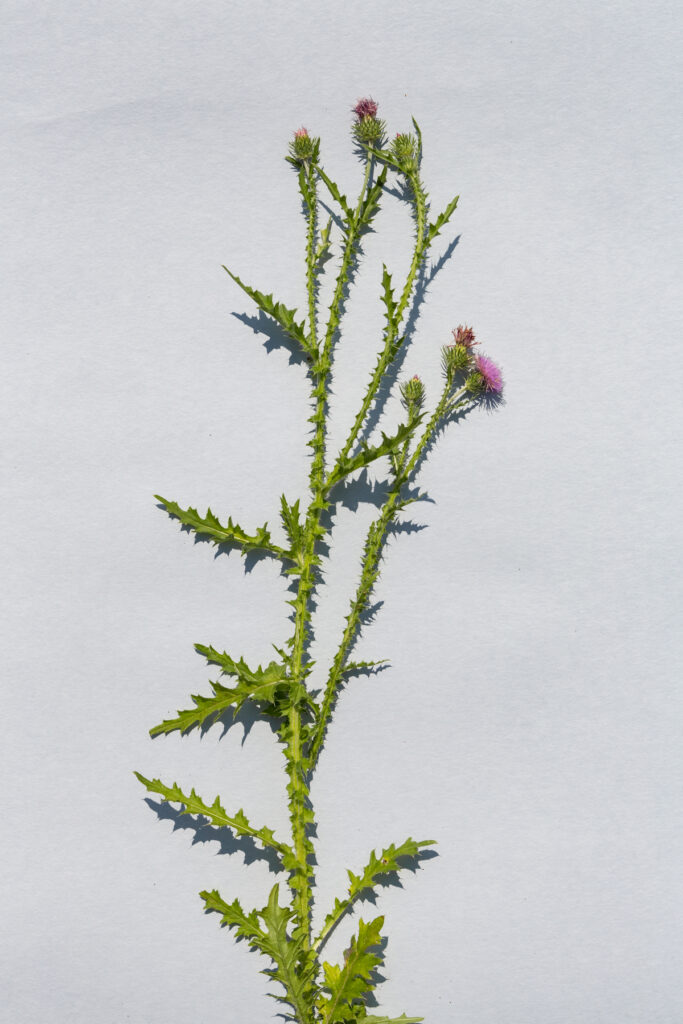
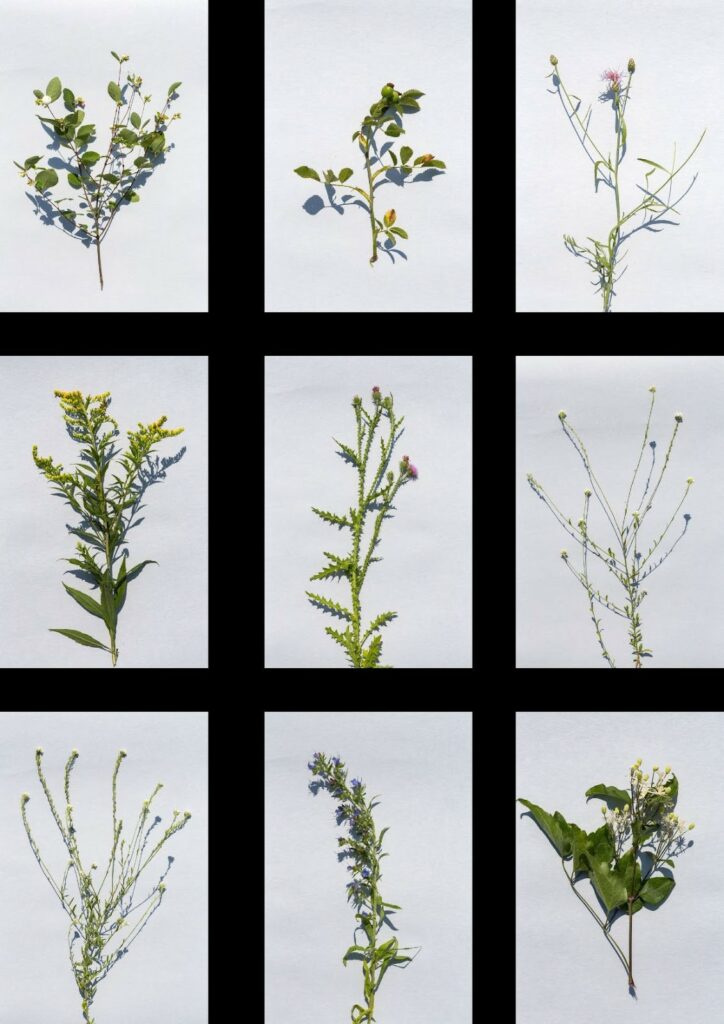
Sandra Jasper’s insights into the Brachen of Teufelsberg inspired an informal survey of the plants that grow on the hillside around Teufelsberg.
Berlin based-artist Laura Fiorio collected plants while documenting Teufelsberg for our workshop, creating this photographic survey for future inspection. Various un/natural archive samples await classification.
Berlin Botanical Garden and Botanical Museum, Dahlem
At the 2019 exhibition Licht Luft Scheiße [Light Air Shit]: Perspectives on Ecology and Modernity, visitors were presented with installations by artists who examined scientific methods and aesthetics of resources, biodiversity, and waste products. Entitled “Plant Workshop of Modernity,” one section of the exhibition investigated “historic protagonists [as a way] to explore the question as to what extent the discourse on plant research at the beginning of the twentieth century was influenced by, or conversely had an influence on, the functionalist, social-reform oriented, and utopian movements of modernity.”[21] One of our guests, Licht Luft Scheiße co-curator Florian Wüst, illuminated various aspects of this exhibition and installations elsewhere in Berlin, as well as expanding on numerous discussion points between the artists’ work and the living collections, such as those within this garden and museum.
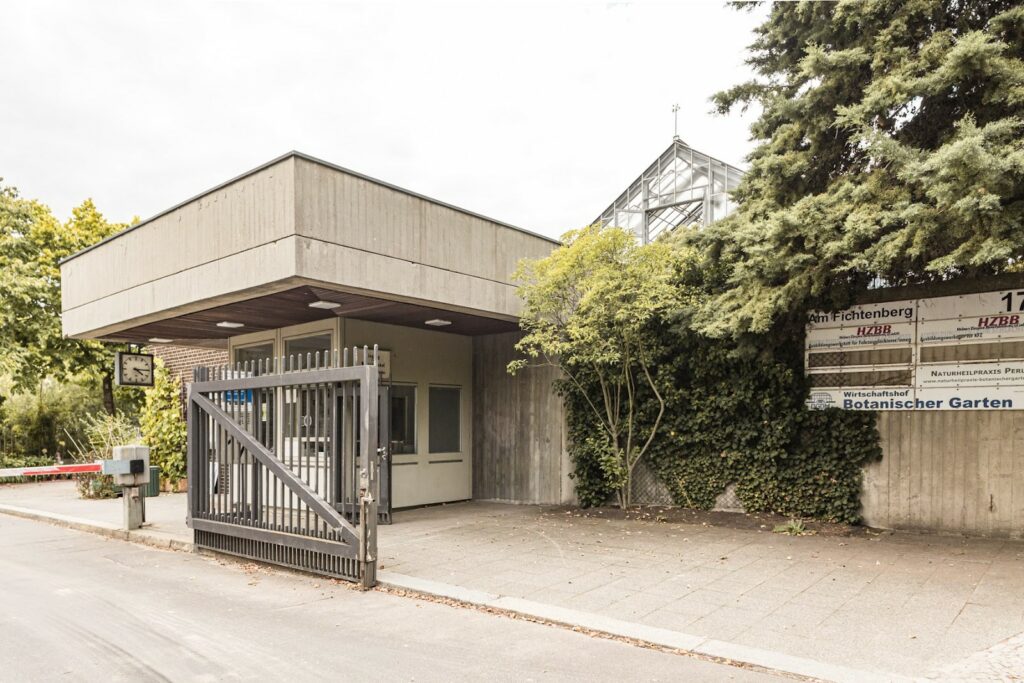
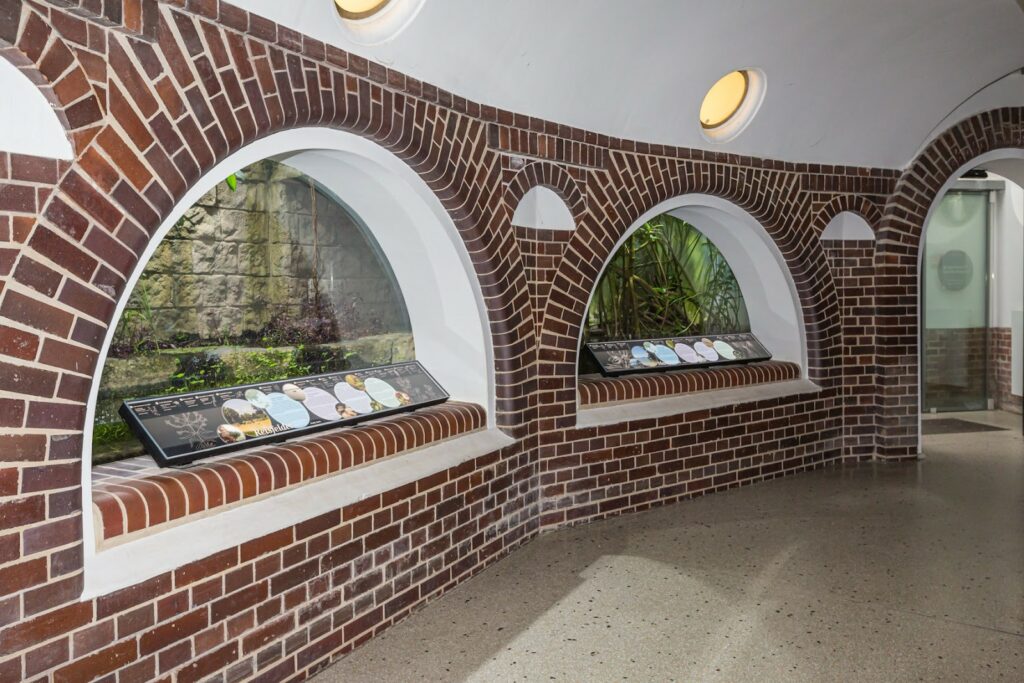
Exhibits contextualize the species on display with didactic information about the global ecosystems to which these plants are native. Elsewhere, in the herbarium, in vitrines, and preserved in vaults are 3,300 plant specimens that Alexander von Humboldt collected on trips to South America.
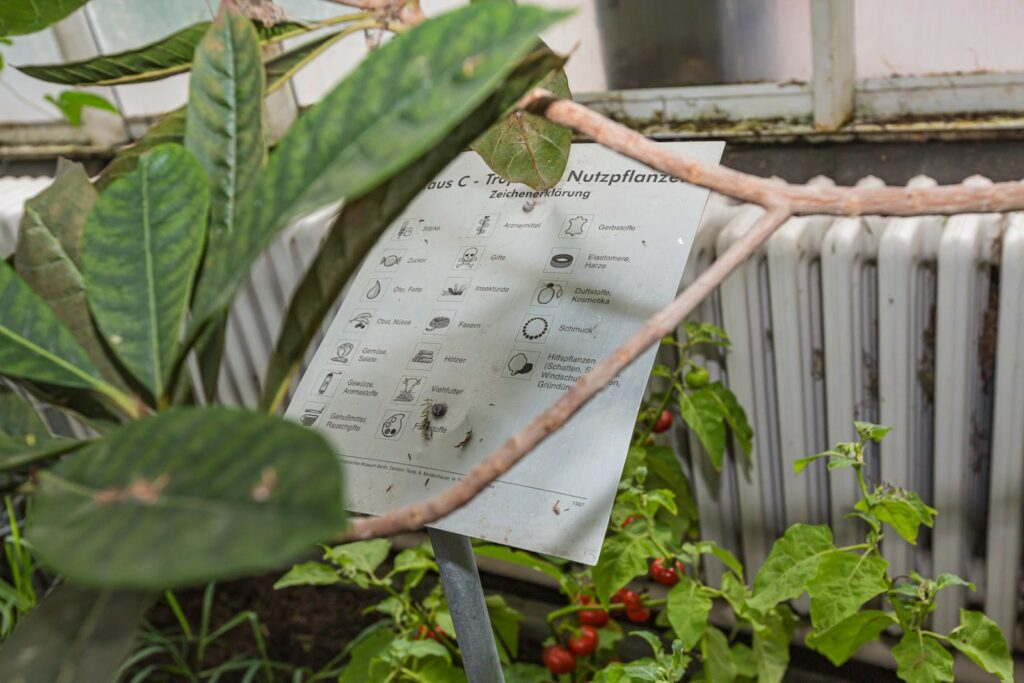
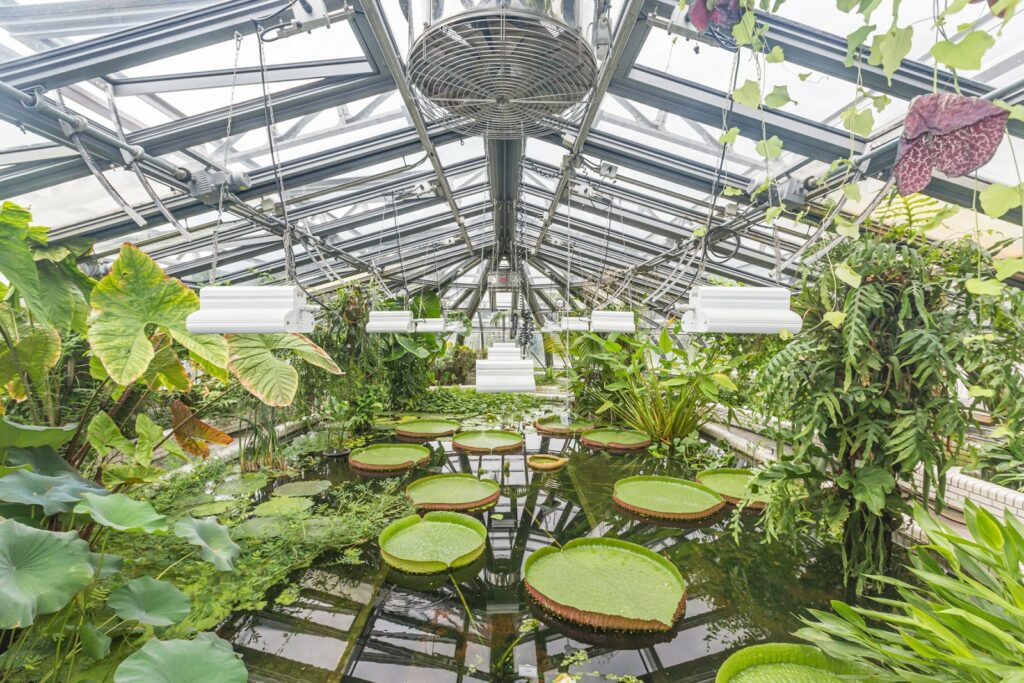
Many of the species cultivated here for educational purposes are accompanied by plaques that explain their practical uses for human use. What is often overlooked are the intersections between consumers and extractive industries in former and current colonial holdings, some of which are intertwined with Germany’s own former colonial efforts in Africa.
The second known botanical garden in the world, the Botanic Garden Berlin-Dahlem began in the seventeenth century as a kitchen garden and hop field for the Berlin City Palace in what is now known as the Lustgarten (Pleasure Garden), adjacent to the Berliner Dom on the Museumsinsel (Museum Island). Discussions about moving the garden to Dahlem began in the late nineteenth century when air pollution in Berlin, caused by the rampant burning of coal, was having a detrimental effect on the plants.
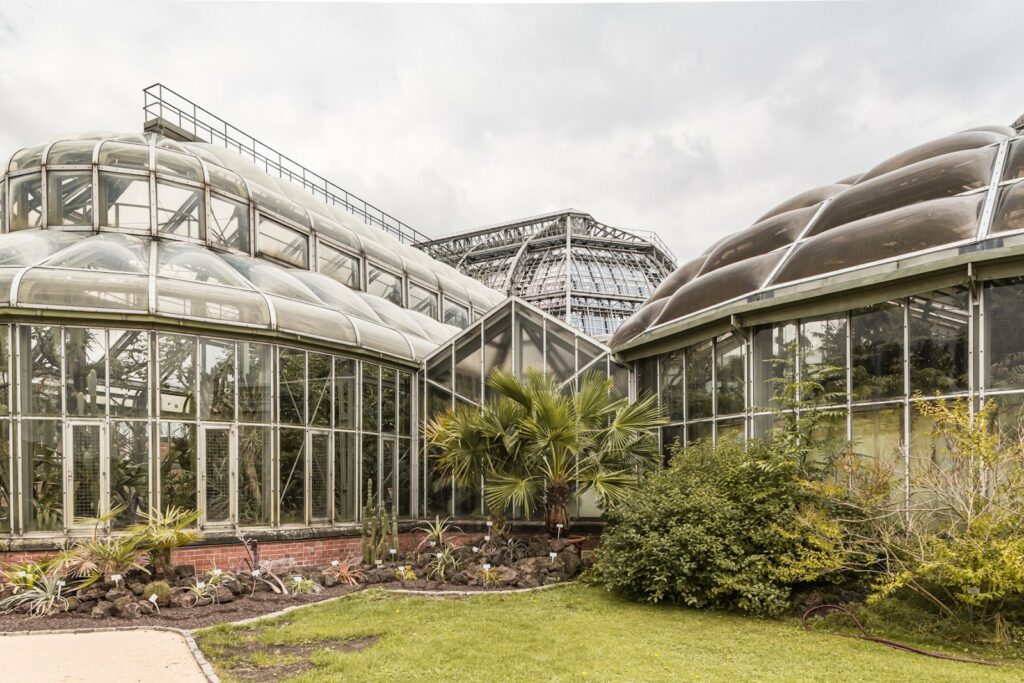
When the Grosses Tropenhaus (Large Tropical Greenhouse) was damaged in the bombing of Berlin in 1943, the garden was abandoned and most of the palm trees and other tropical plants were lost. Despite this destruction, some of the hardiest plants survived. Reading through the records of the Herbarium, one can sense the anxiety botanists felt during and after the war. Every aspect of the collection has numerous mentions of the 1943 fire bombing and its effect on the holdings of lichens, fungi, seeds, ferns, and algae. [22] In some cases, sheets of dried samples were destroyed, others were on loan elsewhere in the world and have since been returned, some were taken off site and never returned, and some—such as the nearly invulnerable pathogenic rust fungi—survived entirely and are still, remarkably alive. An appreciation of how robust life on Earth can be comes into stark relief when organisms like these extremophiles can survive not only total war, but also scientific desiccation and long-term archival storage.
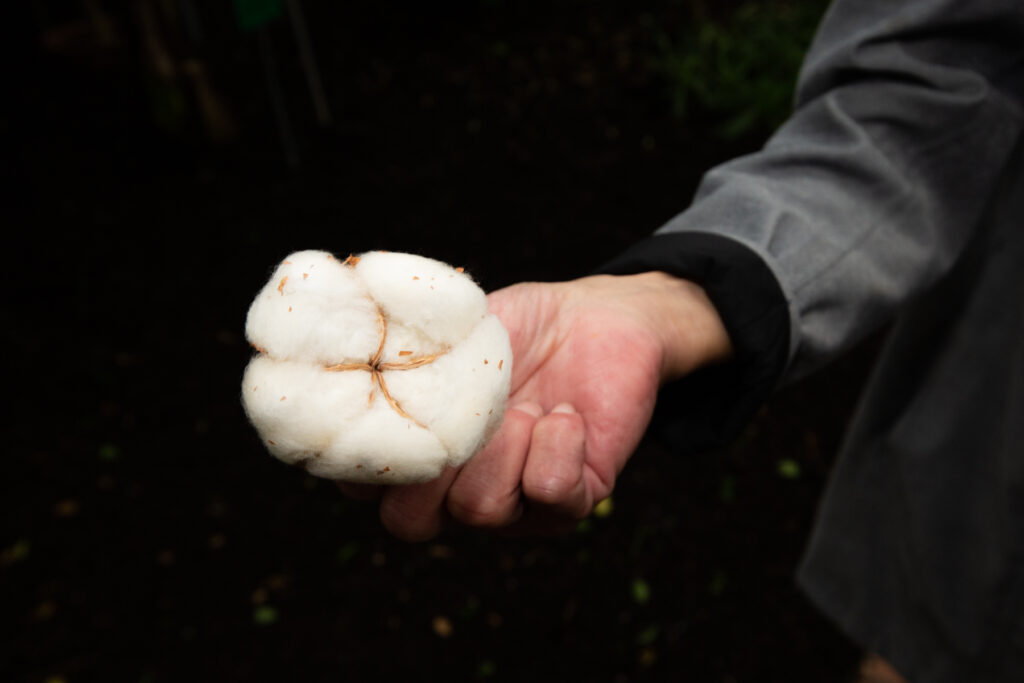
Cotton was imported into Germany in the late nineteenth and early twentieth centuries from the colony of “German East Africa,” an area of land now geographically divided into present-day Burundi, Rwanda, the Tanzania mainland, and Mozambique. Some of the plants in the Botanic Garden Berlin-Dahlem are direct descendants from plants grown in these former German colonies. It is important to note that after over 300 years of collecting and historicizing, the Botanic Garden, Museum, and Seed Bank facility is focused more on the future now than the past. Indeed, the mission statement on the current version of the website reads: “Plants are our Future! Our aims: to explore, document, present, explain and preserve plant diversity.”[23]
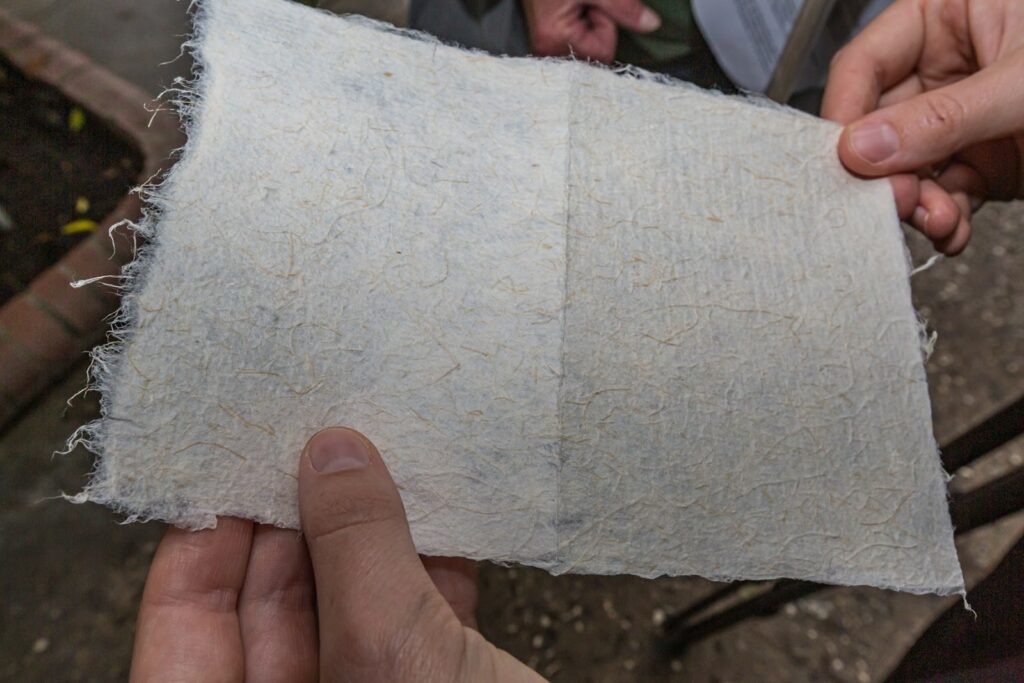
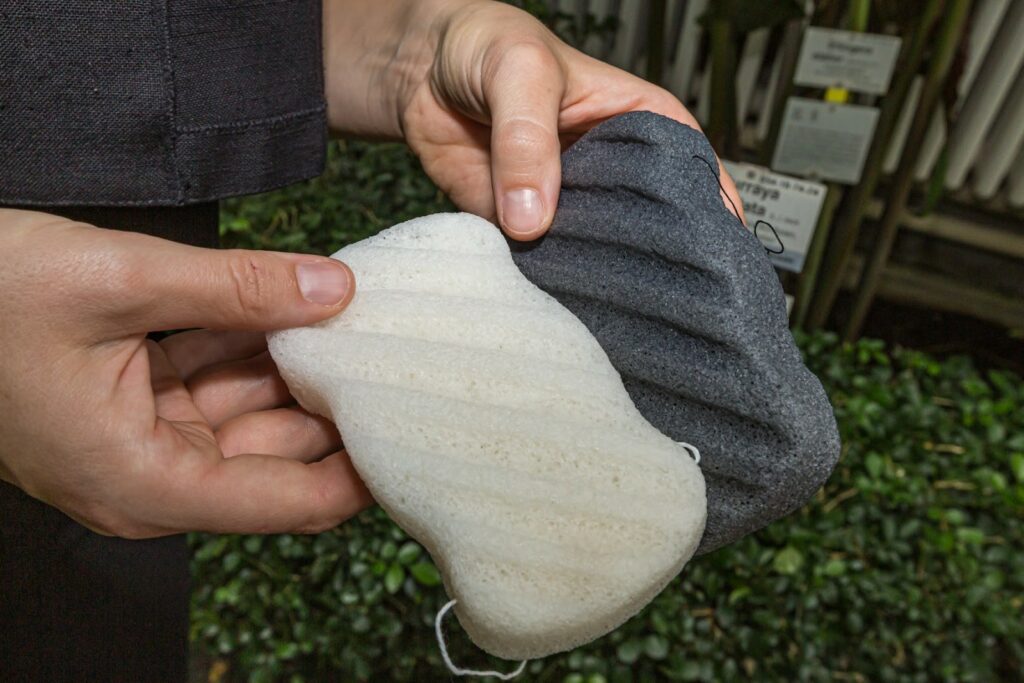
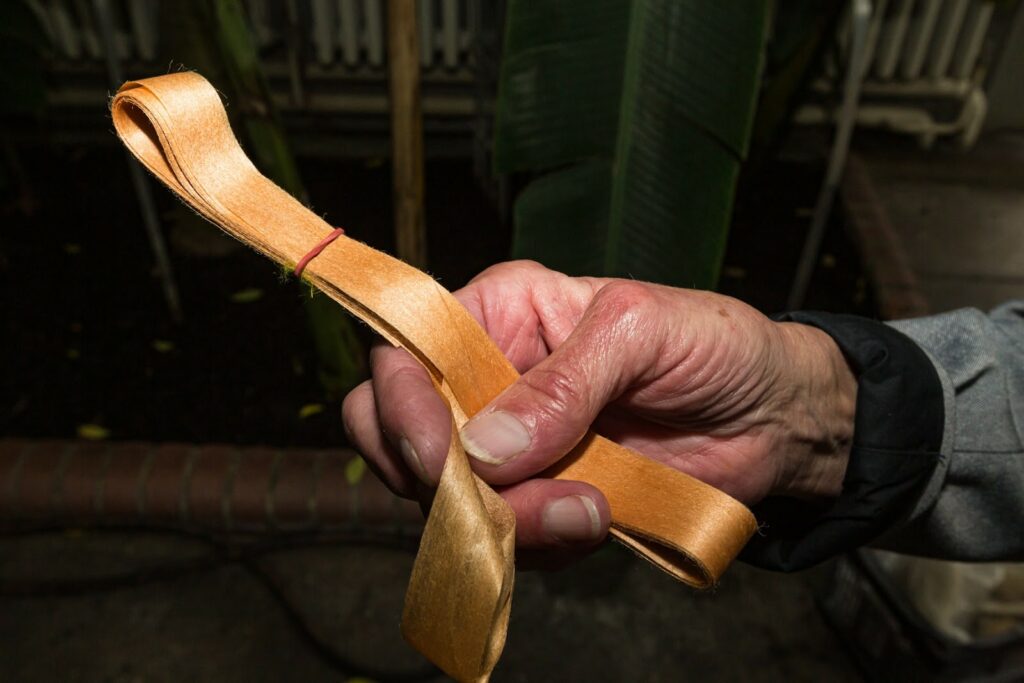
Other examples of how “economic plants” can be used to make functional materials for human use can be seen in these three photographs.
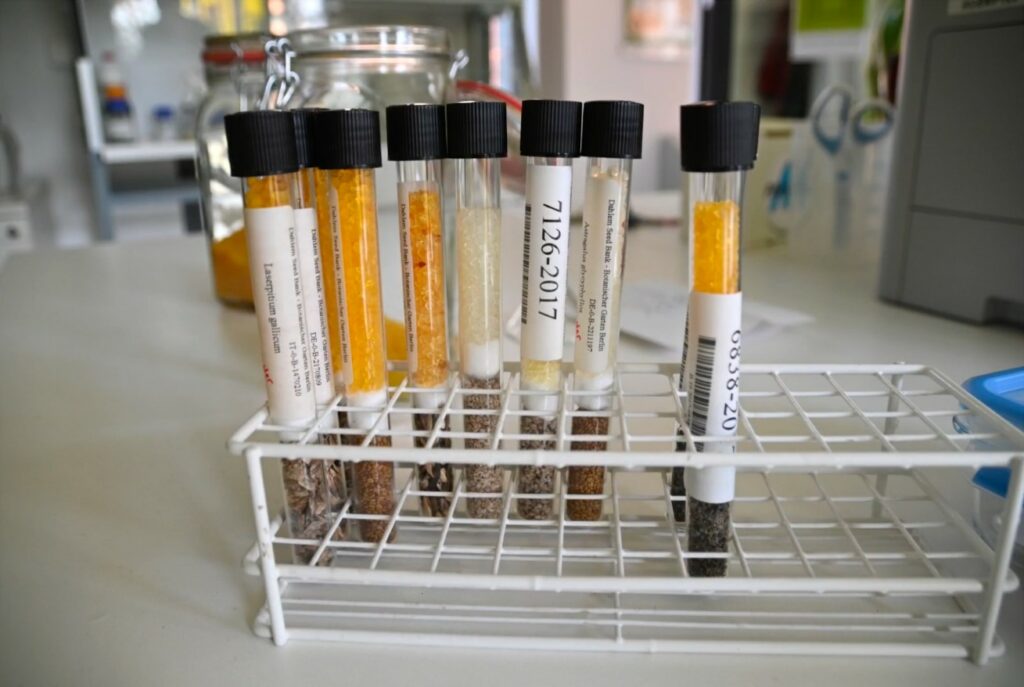
Samples of seeds packed under silicate gel and wadding in preparation for long term storage. One of the research goals at the Seed Bank is a project called the German Barcode of Life that will serve as a “complete recording of the diversity of all animals, fungi and plants occurring in Germany by using DNA barcodes.”[24]
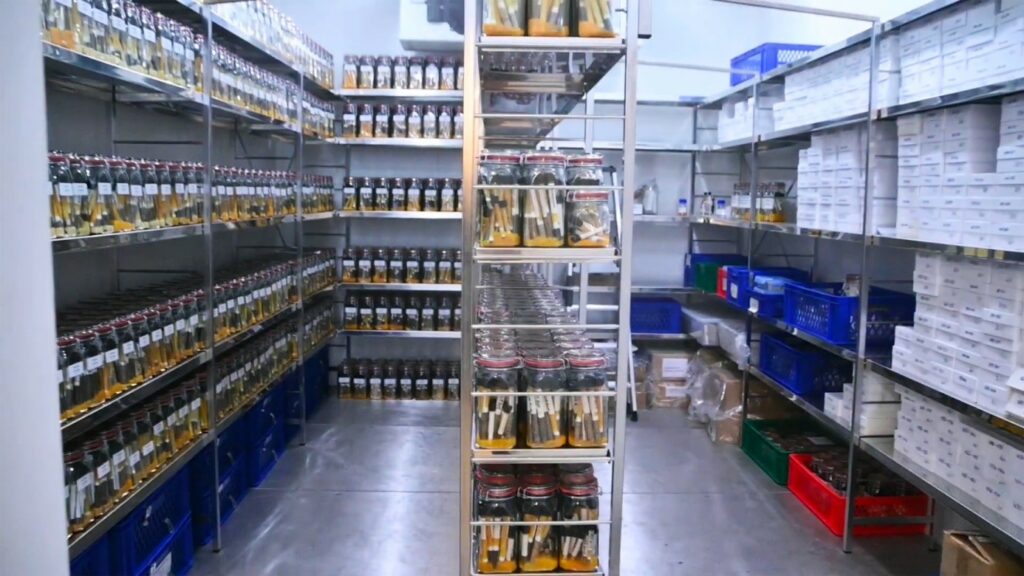
One of the dry storage vaults at the Herbarium Berolinense, where 6,000 seed collections from all over the world, many of them from rare or threatened species, are preserved and kept for study and future re-germination.
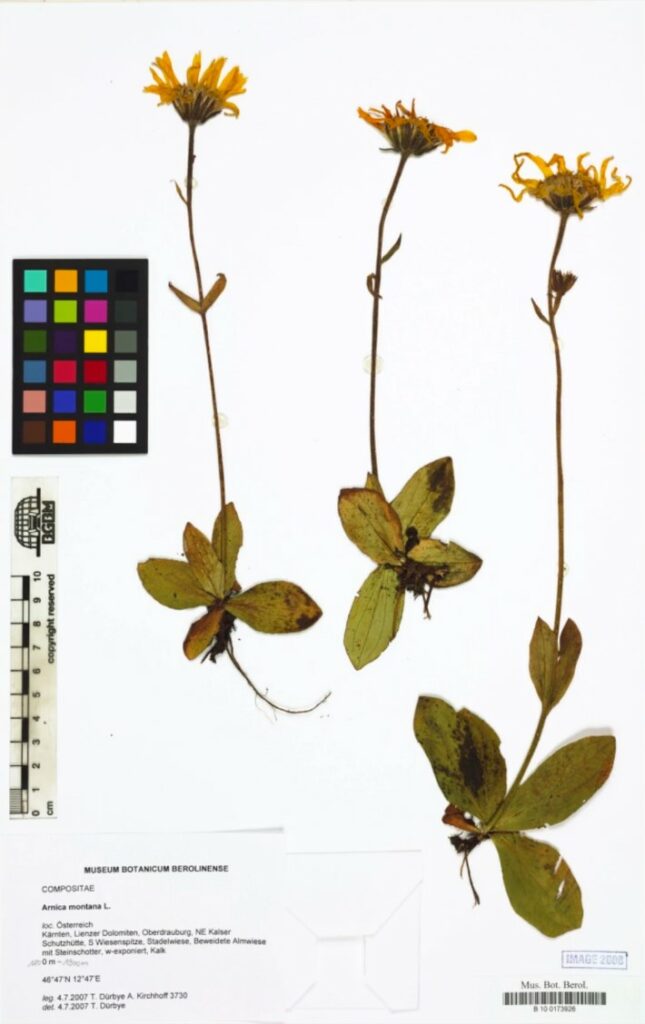
An example of a dried wild plant specimen with color calibration target and measurement chart for accurate archival documentation. Arnica montana, also known as wolf’s bane, is a mildly toxic European flowering plant in the daisy family Asteraceae.
- This contribution frames the workshop “Un-/Learning Archives in the Age of the Sixth Extinction”. You can find the workshop findings here. ↑
- Sven Spieker, “The After-Archive: Notes on Contemporary Art,” Lecture, The Whole Life: Archives and Reality Congress, Dresden, May 23, 2019. ↑
- Lorraine Daston, “Introduction: Third Nature,” in Science in the Archives: Pasts, Presents, Futures, ed. Lorraine Daston. Chicago: University of Chicago Press, 2017, p. 2. ↑
- Susi K. Frank and Kjetil A. Jakobsen, eds.,“Introduction: The Arctic as an Archive,” in Arctic Archives: Ice, Memory and Entropy. Bielefeld: transcript, 2020, p. 10. ↑
- Georg Toefper, “On Similarities and Differences Between Cultural and Natural Archives,” in Arctic Archives,p. 22–26, 29. ↑
- Wolfgang Ernst, “Archival Metahistory and Inhuman Memory,” in Arctic Archives, p. 37–39, 45–46. ↑
- Toepfer, “On Similarities and Differences Between Cultural and Natural Archives,” p. 31–32. ↑
- Reinhard Hennig, “An Arctic Archive for the Anthropocene: The Svalbard Global Seed Vault,” in Arctic Archives, p. 199, 213. ↑
- Ibid., p. 199–213. ↑
- Ross Exo Adams, “Landscapes of Post-History,” in Landscape and Agency: Critical Essays, eds. Ed Wall and Tim Waterman. London: Routledge, 2018, p. 9, 15–16; Elise Hunchuck, “Conditions of Life: Forensic Architecture in the Age of Climate Breakdown,” Flash Art 326, (June–August 2019), https://flash—art.com/article/conditions-of-life-forensic-architecture-in-the-age-of-climate-breakdown/. ↑
- Sandra Jasper, “Wastelands as Urban Archives,” Presentation, Un-/Learning Archives in the Age of the Sixth Extinction Workshop, Whole Life Academy Berlin, online, October 8, 2021. ↑
- Thanks to Dubravka Sekulić for drawing this film to our attention. ↑
- Sandra Jasper and Matthew Gandy, The Botanical City. JOVIS: Berlin, 2019. ↑
- Anna-Sophie Springer and Etienne Turpin, Disappearing Legacies: The World as Forest. Berlin: K. Verlag, 2018, p. 45. ↑
- Anna-Sophie Springer, Presentation, Un-/Learning Archives in the Age of the Sixth Extinction Workshop, Whole Life Academy Berlin, online, November 5, 2021. ↑
- Museum of Natural History Berlin, “Towards a Collection of the Anthropocene,” https://www.museumfuernaturkunde.berlin/en/science/towards-a-collection-anthropocene, accessed November 5, 2020. ↑
- Florian Wüst, Presentation, Un-/Learning Archives in the Age of the Sixth Extinction Workshop, Whole Life Academy Berlin, online, January 21, 2022. ↑
- Sandra Bartoli, Silvan Linden, and Florian Wüst, eds., Licht Luft Scheiße: Perspectives on Ecology and Modernity, vol. 1., Archaeologies of Sustainability. Hamburg: adocs, 2020, p. XIV. ↑
- Sasha Litvintseva, “Geological Filmmaking,” https://www.sashalitvintseva.com/geologicalfilmmaking, accessed December 15, 2021; Sasha Litvintseva, “Geological Filmmaking: Seeing Geology Through Film and Film Through Geology,” Transformations 32 (2018): p. 107. ↑
- Katja Kaiser, “Exploration and Exploitation: German Colonial Botany at the Botanic Garden and Botanical Museum Berlin,” in Sites of Imperial Memory: Commemorating Colonial Rule in the Nineteenth and Twentieth Centuries, eds. Dominik Geppert and Frank Lorenz Müller. Manchester: Manchester University Press, 2015, p. 225–242. ↑
- Sandra Bartoli, Silvan Linden, and Florian Wüst, eds., “Über Natur,” in Licht Luft Scheiße: Perspectives on Ecology and Modernity, vol. 3., Über Nature. Hamburg: adocs, 2020, p. ix. See the section in this volume by Katja Kaiser, “Plant Workshop of Modernity, p. 2–21. ↑
- “General Herbarium: Systematic section – Spermatophytes, Pteridophytes, Bryophtes, Algae, Lichens, Fungi,” Botanischer Garten und Botanisches Museum Berlin, https://www.bgbm.org/en/general-herbarium. ↑
- “Mission Statement,” Botanischer Garten und Botanisches Museum Berlin, https://www.bgbm.org/en/profile/mission-statement. ↑
- “Research Projects, Current projects,” Botanischer Garten und Botanisches Museum Berlin, https://www.bgbm.org/en/research-projects-0. ↑
This contribution is published in the framework of the Whole Life Academy as part of the workshop “Un-/Learning Archives in the Age of the Sixth Extinction”.
Connected Material
A conversation on compulsive archiving in relation to a private archive of press photography on Liberia.
Epistolary narrative, dialogism, intertextuality, speculative narrative — we imagine this text to be letters between the two of us across different temporalities, making use of a speculative and fragmented narrative in line with the themes we explore in our work: archiving the unarchivable, emotions, memories, and other human conditions within the horizon of extinction.
Chto Delat’s installation Canary Archives employs the imagery of the canary in the coal mine, once used to alarm miners when carbon monoxide levels rose. Where is the canary today, that tells us wether the danger is real? It seems to have gone silent, the sharpest signal it can send. In an emergency newspaper issue under the impression of the Russian war on Ukraine, Chto Delat assembles anti-war views of artists and critics and expresses their solidarity with the Ukrainian people.
The audio map “biography of kecak” is an attempt to decrease this discrepancy between the singularity of archival knowledge and the multiplicity of individual realiities – using the sonic as its material.
Interrogating the archive of “green” extractivism is not just about uncovering access to knowledge, legal knowledge, for example, that can help expose (ecological and economic) crime and that can thus be a starting point for empowering true alternatives and thus alternative ways of living and organizing economic processes. It is also about creating a resonant space for shared thinking and reflection.
Accumulation and multiplication of images is an accumulation of the hidden histories behind them. How do we recover these invisible histories?
CLEPTOCRAZIA is an art and science festival curated by Valeria D’Ambrosio at Villa Romana in Florence. The project aims to disseminate knowledge on the roots of the environmental crisis through a cycle of lectures, screenings and performances with the contribution of international artists and scientists.
This collective chain uses multiple entry points to reflect on the encounter of archival practices, objects and material with non-linear timelines.
This workshop addressed archives as related to overlapping sites of nature/culture, climate change, deep time, and the built environment. The following texts and visual materials offer insight into individual participants’ research on
Beyond the objects in any given archive is a myriad of people, encounters and exchanges. The desire to locate the human element beneath archives is challenged by new technology. As part of ‘Life Stories and Archives’, we began a virtual ‘common archive’. Our collaborative thread addresses pertinent questions arising from shared interests in how individual’s origins, biases, networks and political struggles fuel the need to collect.